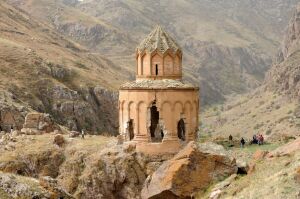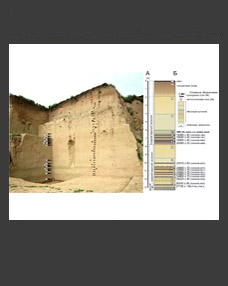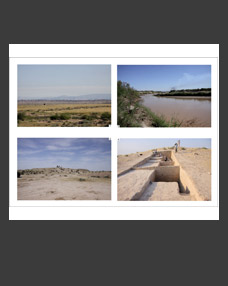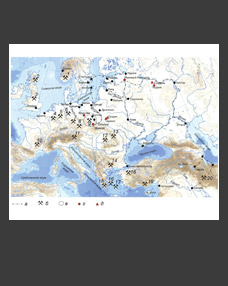National Research Moscow State University of Civil Engineering (NRU MSUCE), Russia
E-mail: KazaryanAYU@mgsu.ru
Keywords: monastery complexes, medieval urban planning, archaeology, sacred topography, architecture of Armenia, Vagharshapat, Ani.
The article analyzes the spread of monasteries in the immediate vicinity or on distant approaches to two cities of Armenia of the late classical and medieval periods, considering information in the sources, the results of archaeological excavations and on-site inspections of the sites. The author reconstructs the sequence of the topography of churches and monasteries near the capitals of the country – Vagharshapat and Ani, identifying the similarities and differences between them. It is noted that the development of the system of shrines in the vicinity of Vagharshapat was determined by the very history of the establishment of Christianity. The main patrons of the church construction from the 4th to the 7th centuries AD were Catholicoses. In the vicinity of Ani, where a surge in the construction of monasteries occurred in the first half of the 11th century AD, there was no given programme, and the originators included the Bagratuni kings and influential princes. While the development of churches near Vagharshapat started under the Arsacid dynasty, continued after the abolition of their royal power, and reached its peak in the first half of the 7th century AD, the monasteries in the vicinity of Ani, founded under the Bagratids, were subsequently developed less actively. In addition, the paper also reveals the specific location of monastic complexes in the vicinity of Ani in connection with the terrain crossed strongly by gorges and the traditional concentration of towns and monasteries along the right, and less often the left, banks of the Akhuryan River. Both on the Ararat Plain and on the Shirak Plateau, the churches and complexes accompanying the capital cities transformed the landscape, so ecclesiastic architectural images marked the visual boundaries of a special, elite culture.
DOI: 10.31857/S0869606324020041, EDN: WOZZDD








